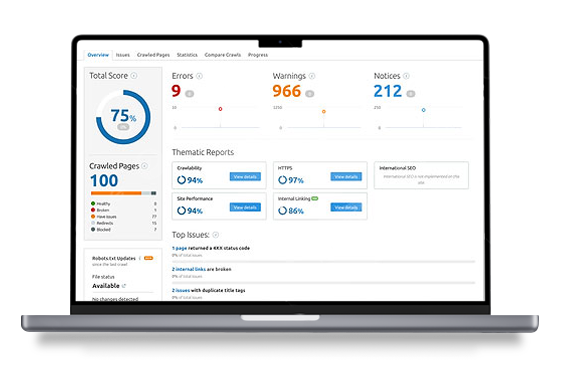Understanding SEO Analysis
SEO analysis is a critical process that evaluates your website's performance in search engine rankings. By examining various elements such as keyword usage, site structure, and backlink quality, this analysis helps identify areas for improvement that can enhance your site's visibility.
For instance, tools that assess on-page SEO metrics can reveal how well your content aligns with user search intent. By addressing these factors, you can significantly improve your chances of ranking higher in search results, thereby increasing organic traffic to your site.
Benefits of a Professional Website Analysis
A professional website analysis provides valuable insights that go beyond basic metrics. It not only highlights existing issues but also offers strategic recommendations tailored to your specific business goals, ensuring that your SEO efforts are aligned with your overall marketing strategy.
For example, a comprehensive analysis might uncover technical SEO problems, such as slow loading times or mobile responsiveness issues, which can adversely affect user experience and search rankings. By addressing these concerns, businesses can enhance user engagement and ultimately drive more conversions.
How to Interpret Your Analysis Report
Understanding the findings of your website analysis report is essential for implementing effective SEO strategies. The report typically includes key performance indicators (KPIs) that indicate the health of your website and areas that require attention.
For example, metrics like bounce rate and average session duration provide insight into user behavior, while keyword rankings show how well your site is performing in search engines. By interpreting these metrics correctly, you can prioritize your SEO efforts and track improvements over time.
Next Steps After Receiving Your Analysis
Once you receive your professional website analysis, it’s important to take actionable steps based on the findings. This may involve optimizing existing content, enhancing site speed, or improving mobile usability to align with best practices in SEO.
Additionally, setting up regular follow-up analyses can help you track progress and adapt your strategies as search engine algorithms and user behaviors evolve. This proactive approach ensures that your website remains competitive in the ever-changing digital landscape.
